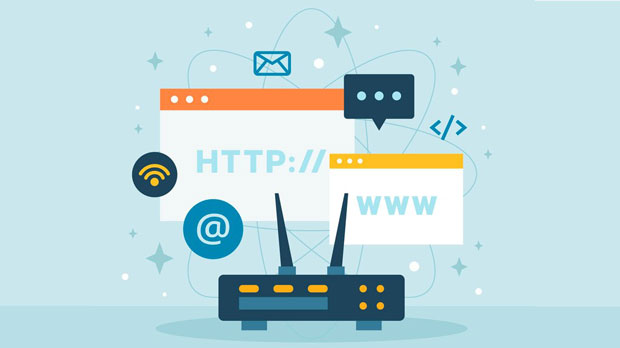Unlimited residential proxies offer a wide range of applications, making them a valuable resource in various industries. These proxies provide users with the ability to browse the internet anonymously, access geographically restricted content, and conduct secure data collection. By masking the user's IP address and routing traffic through a pool of residential addresses, these proxies offer more reliability and credibility compared to traditional datacenter proxies. In this article, we will explore the primary uses of unlimited residential proxies, analyzing their significance in areas such as web scraping, data privacy, market research, and content access. 1. Enhanced Privacy and SecurityUnlimited Residential Proxies are highly beneficial for maintaining privacy and enhancing security while browsing the internet. These proxies mask the user's real IP address by routing internet traffic through a residential network, which is associated with real households. This offers a higher level of anonymity than datacenter proxies, making it much harder for websites to track or block the user. By using these proxies, individuals and businesses can access the internet without revealing sensitive personal information, avoiding surveillance, and reducing the risk of cyberattacks.Moreover, unlimited residential proxies provide a safer way to browse the web while working remotely or accessing public Wi-Fi networks. Since these proxies encrypt the traffic and assign residential IP addresses, they provide an additional layer of protection against hacking attempts, especially on unsecured networks.2. Web Scraping and Data CollectionWeb scraping has become an essential tool for businesses and researchers who need to gather large amounts of data from websites. Unlimited Residential Proxies are particularly useful for web scraping tasks because they allow users to bypass IP-based restrictions imposed by websites. Many websites limit the number of requests a user can make from a single IP address, which can result in blocked access or CAPTCHAs. By using residential proxies, scraping tools can rotate between multiple residential IPs, making it more difficult for the target website to detect or block the activity.Additionally, residential proxies are ideal for collecting data from websites that offer location-specific content. By using proxies from different geographic regions, users can access region-locked content and gather accurate data based on specific locations. This is especially useful for e-commerce businesses, market researchers, and SEO experts who need to monitor competitors' prices, track product availability, or analyze regional trends.3. Bypassing Geo-Restrictions and CensorshipUnlimited Residential Proxies are an excellent tool for bypassing geo-restrictions and internet censorship. Many websites and streaming platforms restrict content based on the user's location, often due to licensing agreements or regional regulations. By using residential proxies, users can make it appear as though they are accessing the internet from a different location, effectively bypassing these restrictions.For example, individuals can use residential proxies to access streaming services like Netflix, Hulu, or BBC iPlayer from countries where these services are unavailable. Similarly, these proxies can help users access websites that are blocked or censored in certain countries, such as social media platforms, news websites, or forums.This makes unlimited residential proxies especially valuable for travelers, expatriates, or individuals living in regions with heavy censorship, as they can access content that would otherwise be unavailable to them.4. Ad Verification and Market ResearchAd verification is a crucial part of digital marketing, as businesses need to ensure that their ads are being displayed correctly across various platforms and regions. Unlimited Residential Proxies play a significant role in ad verification by allowing users to check how their ads appear from different locations, ensuring that targeting, geo-specific ads, and content delivery are functioning as expected.These proxies also help businesses conduct competitive market research by enabling them to monitor competitors' advertisements, pricing strategies, and product listings. By rotating between multiple residential IP addresses, companies can gather accurate and up-to-date data from different geographic locations, providing insights into regional marketing tactics and pricing trends.5. Managing Multiple AccountsFor businesses or individuals who need to manage multiple social media or online accounts, unlimited residential proxies are invaluable. Websites often detect and block multiple logins from the same IP address, which can lead to account suspensions or bans. Residential proxies help avoid this issue by assigning unique IP addresses from real residential networks for each login, ensuring that accounts appear as if they are being accessed by different users.This feature is particularly useful for social media managers, marketers, or individuals involved in affiliate marketing, who need to manage several accounts without the risk of detection. By using residential proxies, users can operate multiple accounts simultaneously, engage in different online activities, and avoid restrictions.6. Online Shopping and Sneaker BotsUnlimited Residential Proxies are widely used in online shopping, particularly for purchasing limited-edition products, such as sneakers or concert tickets. Many online retailers employ anti-bot measures to prevent automated purchases, including CAPTCHA challenges and rate-limiting. However, by using residential proxies, bots can simulate real human activity, making it more difficult for websites to distinguish between genuine customers and automated systems.Sneaker bots, for example, rely on residential proxies to increase the chances of securing high-demand products before they sell out. By rotating through a pool of residential IPs, users can circumvent anti-bot measures and gain a competitive edge in purchasing rare items.7. SEO and SERP MonitoringSearch Engine Optimization (SEO) is an essential strategy for improving website rankings on search engines like Google. Unlimited Residential Proxies are commonly used by SEO professionals to monitor Search Engine Results Pages (SERPs) and analyze how websites rank for specific keywords.Using residential proxies allows SEO experts to track keyword rankings from different geographical locations, providing insights into local search trends and the effectiveness of their SEO strategies. Additionally, residential proxies can be used to test website loading times, conduct backlink analysis, and evaluate the performance of various marketing campaigns.Unlimited Residential Proxies are a powerful tool for businesses, researchers, and individuals who require anonymity, security, and access to region-locked content. From web scraping to ad verification, managing multiple accounts to bypassing geo-restrictions, these proxies provide a versatile solution for a wide range of online activities. By offering a higher level of credibility and reliability compared to datacenter proxies, residential proxies are becoming an essential resource for anyone looking to navigate the internet securely and efficiently. Whether you're conducting market research, monitoring competitors, or simply protecting your privacy, unlimited residential proxies can help you achieve your goals while maintaining a high level of security and anonymity.
Aug 20, 2025



































































